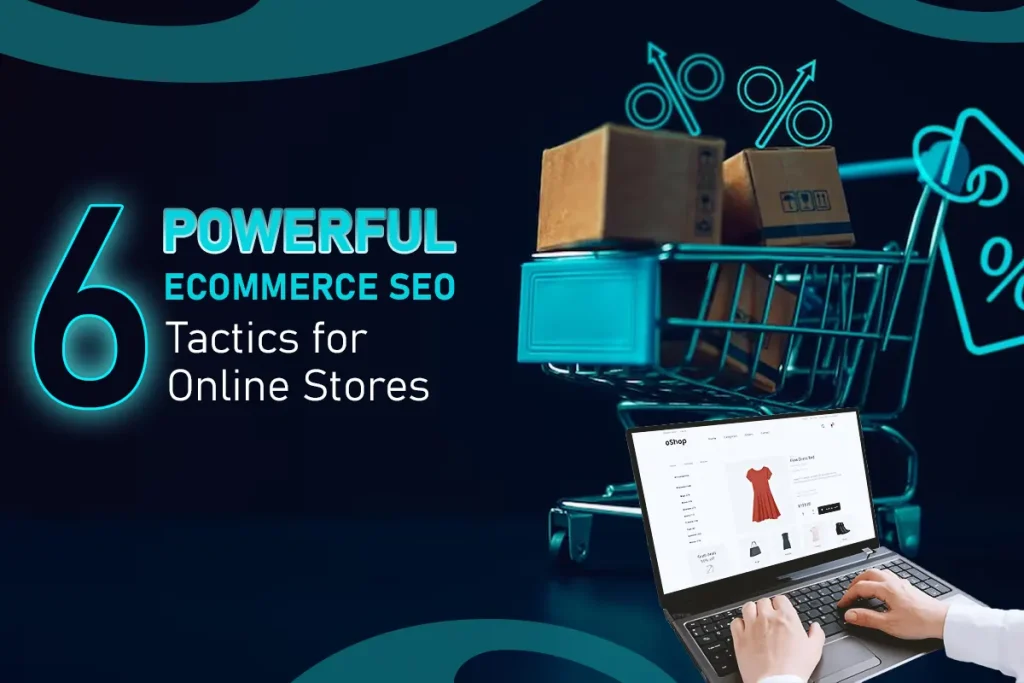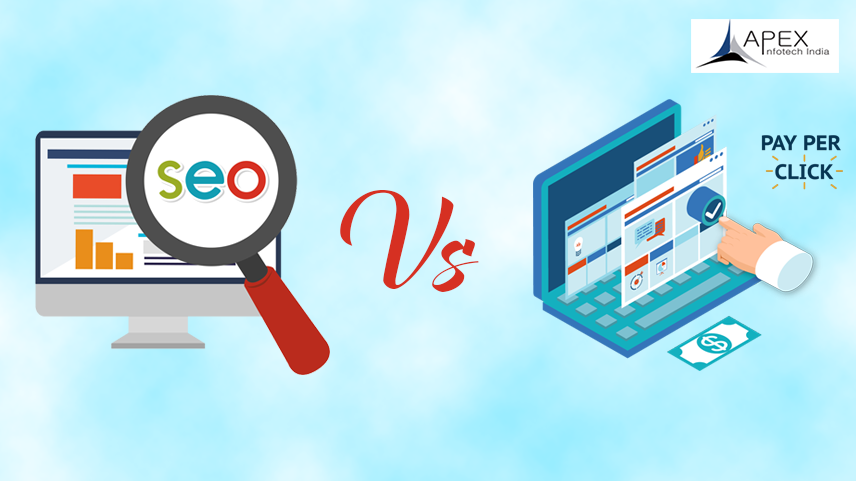The internet is the new shopping mall, and everything that consumers seek is simply a click away as an owner of an Ecommerce business, that gives you all the more reason to up your Ecommerce SEO game.
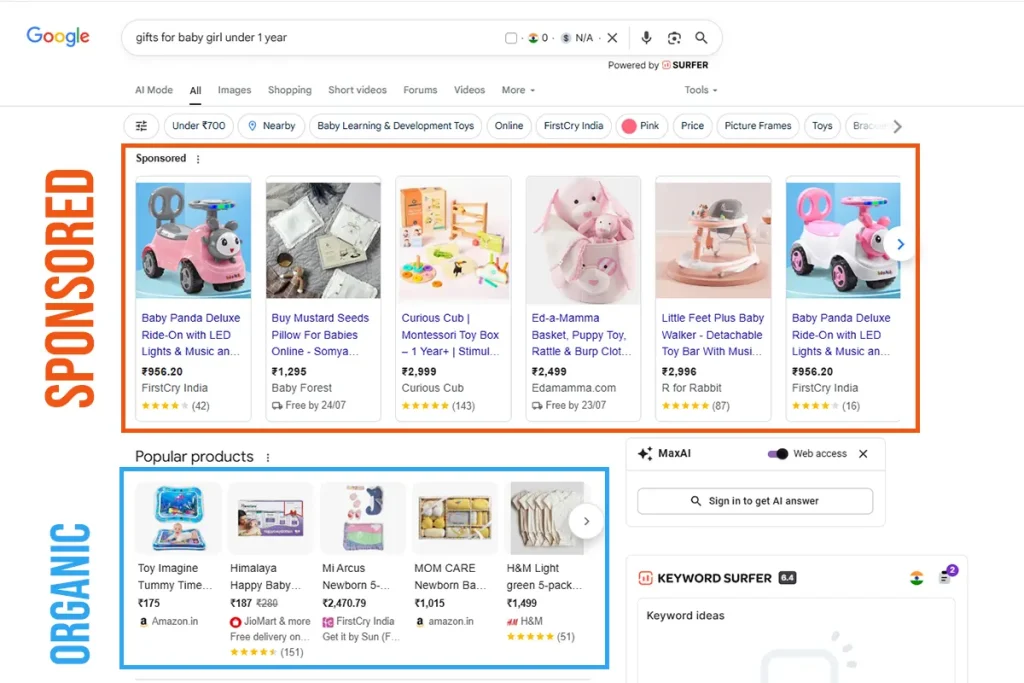
About 87% of shoppers begin by looking for products online, and around 63% actually place an order. This means for page has to appear on the top of the results, for your products to get seen and discovered by your target customers. No prices for guessing what helps you with that- of course, Ecommerce SEO.
Search Engine Optimization (SEO) has proven to show incredible results for businesses of all kinds. Studies have shown, for every $1 you invest in SEO, you earn about $7 in turn.
While it is common practice in industries like blogging, media, or service-based consulting, SEO in Ecommerce is relatively underutilized. Let’s unravel all the basics of this branch of SEO.
What is Ecommerce SEO?
Ecommerce website SEO is a strategy that online stores can implement to rank higher in search engines, like Google. It is a free-of-cost way of getting a stream of customers to your product page and subsequently garnering more sales.
You essentially apply SEO strategies for Ecommerce sites, on service pages, product pages, category pages, etc. It includes both content-related and technical modifications.
The key tasks associated with SEO for e-commerce sites are:
- Keyword research
- Optimizing product descriptions
- Running a technical audit of the page
- Improving site structure
- High Quality Backlinking
- Fresh content
Ecommerce SEO Vs Paid Ads
Think about it. When was the last time you clicked on a sponsored ad instead of a top organic result? You can’t recall, right?
Well, most stats show that most traffic goes to organic results, and why is that? The answer lies in user behavior. People likely trust Google to show the most credible results at the very top.
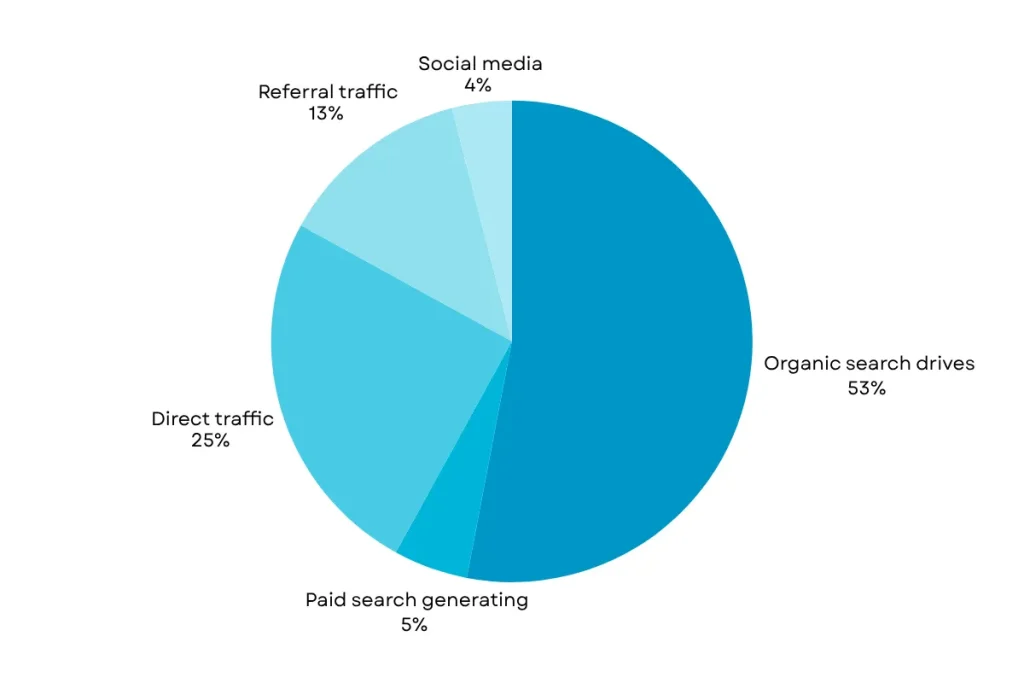
Even though Ecommerce SEO efforts can rank you on SERPs, it is a long-term investment. It requires consistent effort and patience. Ads, on the other hand, may show instant results, but obligate you to pay per click.
| SEO | PAID ADS |
|---|---|
| Free clicks | Pay per click or impression |
| Results in long term | Instant results |
| More trusted by users | Seen as promotional/ sponsored |
| Ideal for evergreen products and product discovery | Ideal for sales, discounts, and remarketing |
It is essential to build upon a smart SEO strategy for Ecommerce website as it brings you relevant traffic, trust, and sustainable ROI.
Top 6 Proven Strategies for E-commerce SEO
Now that we know how crucial SEO is for stores on the internet, let us share our tried and tested Ecommerce SEO checklist, that we have implemented for online retailers across all industries.
1. Keyword Research Based on Buyers Persona
Keyword Research remains an important part of all types of SEO practices; Ecommerce SEO is no different. Targeting the right keywords brings relevant traffic to your website. These are users that most willing to make a purchase.
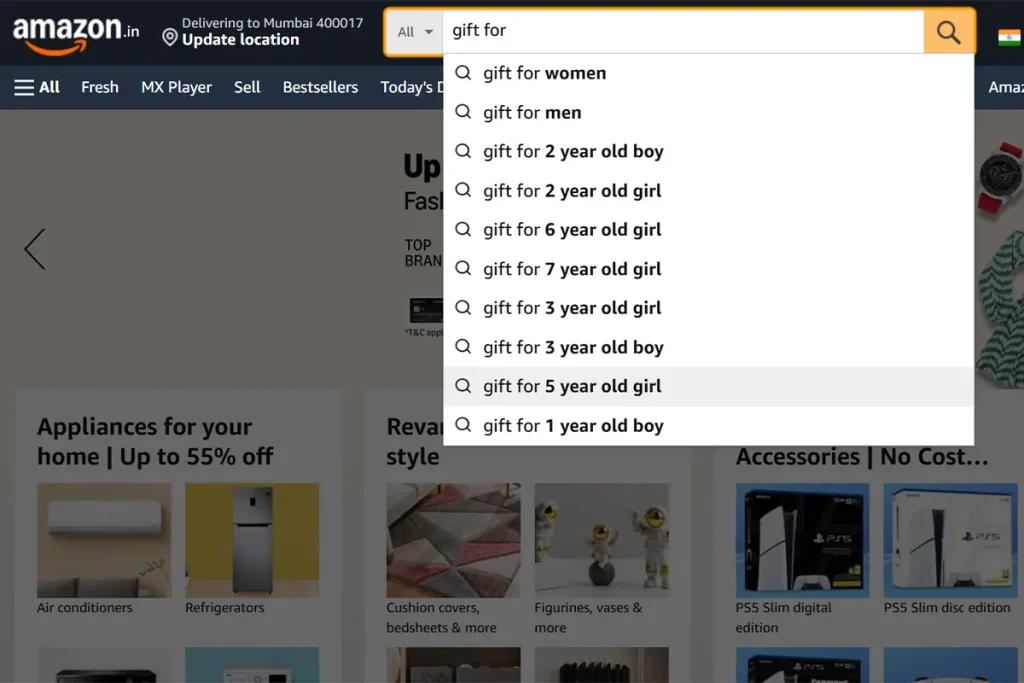
Apart from your standard keyword research from Google AdWords, SEMrush, or any other SEO tool, you can also utilize Amazon. How would you do that? It’s simple.
When you type in a seed term – for instance, “gifts for baby”. As you type it out, Amazon tries to autocomplete by suggesting popular related phrases.
These aren’t random suggestions. They reflect what customers are actively looking for. This could be a quick and clever approach to keyword research. But don’t stop there.
You can find the right keywords by knowing what your competitors are ranking for. It gives you a better understanding of your audience’s language and purchasing patterns.
Not every shopper is at the same stage of the buying journey. So it is important to identify their intent, whether it’s informational, commercial, or transactional.
If users come with a transactional intent, that means they intend to buy. So, using high-conversion active call-to-action terms like “Buy now” or “Order now” would be most effective.
If users have an informational or commercial intent, they’re just in their learning, scanning, and deciding. In this case, you can use informational keywords like “ How to choose” or “ Types of”.
| Types of Search Intent | Meaning | Example |
| Navigational | Want to find a certain page | “Apple website” |
| Information | Want to learn more about something | “Best features of an Iphone” |
| Commercial | Reviewing different products before buying | “Best Iphones under 80k” |
| Transactional | Want to purchase something online | “Buy Iphone 13 pro” |
Simply put, formulate a different keyword strategy catering to the different types of visitors your website gets.
2. Create BOFU Posts
Now that we know what user intent truly is, it becomes easier to create an overarching content strategy based on it, particularly focusing on BOFU (Bottom Of The Funnel) content.
This strategy traces the journey of an online shopper and enables you to be present beside them every step of the way. Here’s how that works:
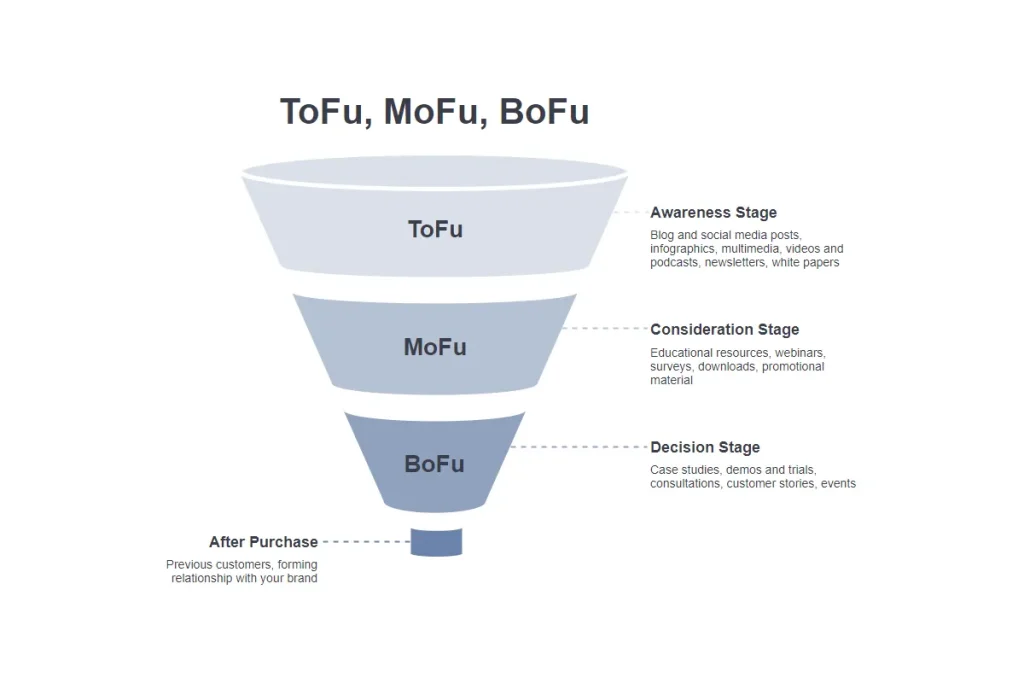
The funnel represents the narrowing down of the users based on their intent. At the top of the funnel (TOFU) is the awareness stage, comprising users with an informational intent.
This is followed by the middle of the funnel (MOFU), consisting of discerning users with a commercial intent.
At the bottom of the funnel (BOFU) are users ready to purchase. As an Ecommerce brand, you ought to have content pages that cater to users at each of these stages.
The idea is to be a lingering presence for them at each of these stages. Let them be exposed to your brand right from the information stage, and then when they finally have to make a purchase, you’re already at the top of their mind.
3. Structure Your Data
Think of a neatly stacked cupboard- your office clothes in one drawer, your casual clothes in another, you know where your socks are, you know just where to find your watch!
This is exactly how a clearly laid out online store appears; a clean layout, with all of the website’s data organised in a systematic and logical way.

You can use structured data to provide all the key product (SKU) details such as title, descriptions, price, reviews, images, and more.
The more structured your interface, the easier it is for visitors to browse through your site and find what they are looking for.
Structured data is also helpful for Google to decipher what each page is all about. When the search engine understands your content better, it can highlight your product in the following ways:
- Google Images
When you use structured data, Google can better interpret your product images. This increases the chances of your product showing up on Google images or Google shopping, as well.

- Rich Snippet
Structured data coupled with a valid schema markup also increases the chances of your page getting featured as a rich snippet.
Rich snippets, also known as rich results, are enhanced listings that display additional information below the meta description. This can get your page more attention and boost your click-through rate.
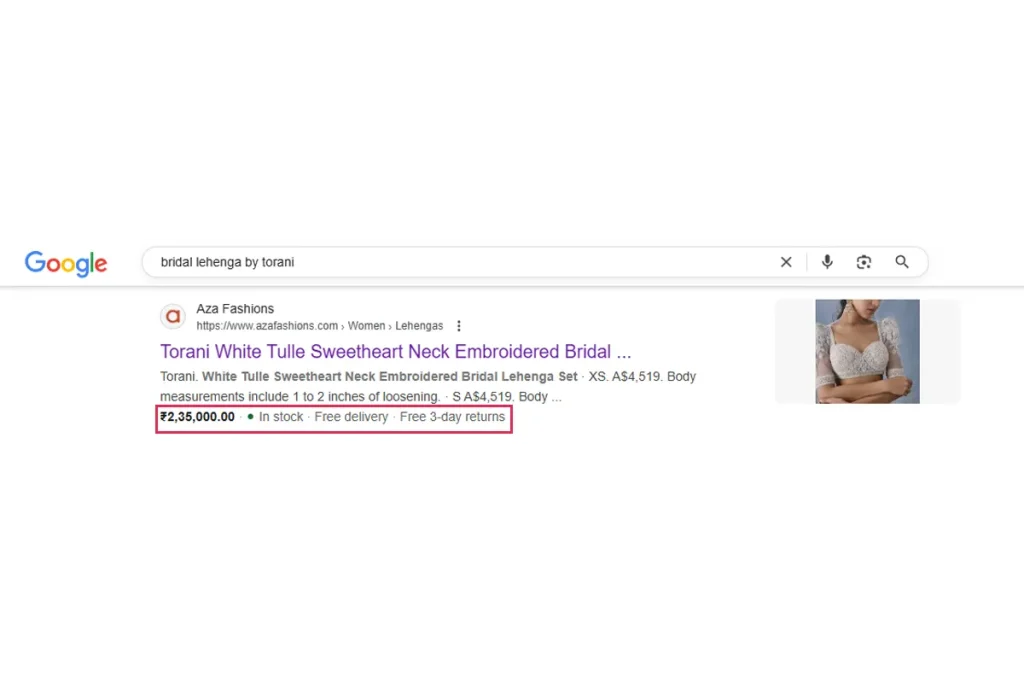
4. Focus on Mobile Shopping Experience
An average person spends about 4.5 hours on their smartphones, and a significant chunk of that time is spent browsing through shopping sites. Be honest- how much time do you spend online shopping?
Plus, it is reported that mobile traffic now makes up more than 70% for Ecommerce traffic. Clearly, consumers prefer mobile shopping experience over desktop.
Google, too, uses mobile-first indexing, meaning it ranks your site by judging its mobile version. All of these facts simply highlight how important it is to optimize your Ecommerce site for mobile.
Just keep these key points in mind:
- Create a responsive design that can adapt to different screen sizes
- Make sure your text is readable even on small screens
- Let there be spacing between links, CTA buttons, and other clickable elements.

5. Build High-Quality Backlinks With High-Quality Content
Off-page SEO is critical for the success of On-page SEO for Ecommerce sites. Creating high quality backlinks on relevant third party sites will help bring traffic to your online store. It also does marvels for you website’s authority.
According to Search Engine Journal, Ecommerce website that focus on link building strategy see a 25% increase in organic traffic.
You can achieve good backlinks by doing the following:
1. Claim unlinked brand mentions
You ought to claim the unlinked backlinks. Find domains that mention your brand or product but don’t link to your site. It could be anywhere on the web, social media platforms, or forums.
You can use tools like Semrush and Ahref to track such unlinked mentions. Then you can reach out to them asking to add a clickable link to the mention. Often times, they’ll gladly do it.
2. Conduct a backlink gap study
You could conduct a backlink gap analysis by doing a thorough competitor research. Find websites that link them but not you. When you find such sites, email them asking if they’re interested in featuring your brand.
3. Stick to the basics
It is always smart it stick to standard practices like link exchanges, guest posting, submitting to directories, and implementing digital PR, as long as they’re meaningful and do not feel spammy.
6. Write Fresh And Unique Content
Content uniqueness and freshness are key to SEO for Ecommerce sites.
Search engines prioritize original and valuable information. Write vivid, comprehensive, and keyword-rich product descriptions. Also post blogs, FAQs, buying guides, and even customer testimonials.
This helps you target long-tail keywords and answer common questions users are asking. But always remember, your content isn’t just about Ecommerce ranking, it’s about building a special connection with your audience. And that might naturally lead to the former!
How Will Ecommerce SEO Benefit Your Business?
Ecommerce SEO is key to building a sustainable business online. Optimizing your store for search engines can make your product more visible to people who are actively looking for it. The goal isn’t just sales, but also to build a unique brand identity and develop trust and authority.
SEO levels the playing field, giving small and mid-sized players the opportunity to compete with the moguls of the industry. All you need to do is implement fundamental strategies like keyword research, intent-driven content planning, mobile optimization, and structured content.
Feeling overwhelmed? Hire the best SEO agency in Mumbai, Apex Infotech. Ecommerce SEO service is one of our biggest expertise, with proven track record of driving trafficking and increasing conversions.
Frequently Asked Questions
What is Ecommerce SEO?
Ecommerce SEO is a digital marketing strategy for online stores to optimize their website and content so as to show higher on search rankings.
How does Ecommerce SEO benefit your business?
Consistent and smart SEO strategies for Ecommerce sites can boost their visibility and trustworthiness. This can lead to higher conversions and sales.
What is the difference between Ecommerce SEO and normal SEO?
Ecommerce SEO focuses on optimizing product and site pages, and overall site architecture with the main goal of driving sales. In contrast, normal SEO typically targets blogs and service pages, with the intention to bring more traffic to the site.
Who is the best Ecommerce SEO services provider in Mumbai?
Apex Infotech India is regarded as one of the top Ecommerce SEO agencies in Mumbai. With over a decade long experience in helping online stores grow their visibility and sales, Apex delivers end-to-end Ecommerce SEO solutions.
What are the best SEO strategies for Ecommerce sites?
Keyword research, mobile optimization, and backlink building are the key practices of Ecommerce website SEO. Studying buyer personas and writing unique content accordingly is also a must.

